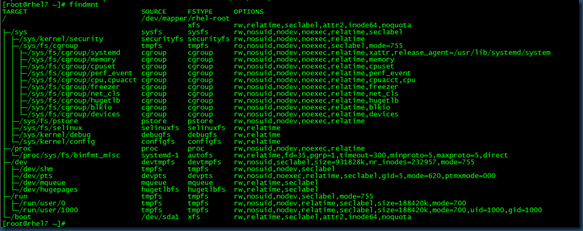■ The mount command gives an overview of all mounted devices. To get this information, the /proc/mounts file is read, where the kernel keeps information about all current mounts. It shows kernel interfaces also, which may lead to a long list of mounted devices being displayed.
■ The df -Th command was designed to show available disk space on mounted devices; it includes most of the system mounts. Because it will look on all mounted file systems, it is a convenient command to get an overview of current system mounts. The -h option summarizes the output of the command in a human-readable way, and the -T option shows which file system type is used on the different mounts.
|
The output of df is shown in seven columns: |
■ The findmnt command shows mounts and the relation that exists between the different mounts. Because the output of the mount command is a bit overwhelming, you may like the output of findmnt . Listing 3.2 shows sample output of this command.


